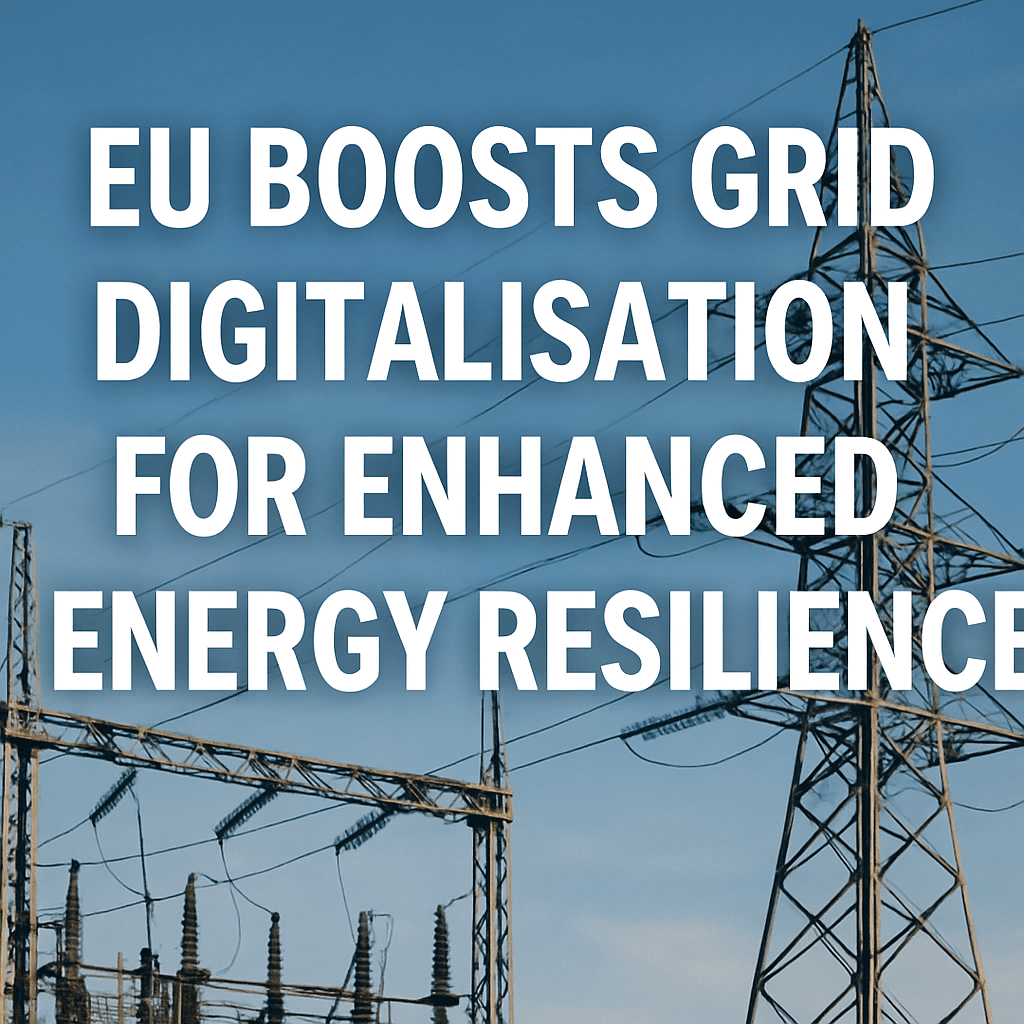EU Boosts Grid Digitalisation for Enhanced Energy Resilience

Overview of the Iberian Power Outage
In February 2024, an unexpected grid collapse swept across portions of Spain and Portugal, disrupting power to hospitals, traffic signals, manufacturing plants, public transport networks, and communications infrastructure. Although official fault analysis is ongoing, preliminary findings by the Iberian Transmission System Operators (TSOs) point to a simultaneous trip of multiple generation units—likely triggered by a protection relay miscoordination—leading to system-wide frequency deviations and instability.
Key impacts included:
- Loss of 4.2 GW of generation within seconds, exceeding the Iberian grid’s N-1 security margin.
- Automated load-shedding protocols activating across urban centres.
- Critical services sustained via diesel generators and battery-backed uninterrupted power supply (UPS) systems.
A rapid black-start procedure was executed by the national operators in collaboration with ENTSO-E, restoring bulk power within four hours. Yet the incident has renewed calls for accelerated grid modernisation and energy management across the EU.
Why Is Grid Digitisation So Important for the EU’s Energy Resilience?
Gwenaelle Avice Huet, Executive Vice President of European Operations at Schneider Electric, emphasises that existing grid assets are aging: “Over 40% of Europe’s high-voltage and distribution networks have been in service for more than four decades. They lack embedded intelligence for real-time control and automated fault recovery.”
Key digital technologies include:
- Phasor Measurement Units (PMUs): Provide sub-cycle synchrophasor data over IEC 61850-90-5 protocols for situational awareness.
- Advanced SCADA and DMS: Enable dynamic line rating, voltage optimization, and automated load restoration modules.
- Self-healing Switchgear: Incorporates reclosers and sectionalizers with embedded relays to isolate faults within milliseconds.
The European Commission’s latest Digital Decade targets call for at least 80% of grid assets to be digitised by 2025. According to the Commission’s 2023 Electricity Infrastructure Outlook, Europe will need roughly €584 billion in grid investments by 2030 to meet its decarbonisation and electrification goals.
How Can Businesses and Industries Better Handle Power Outages?
Demand-side flexibility and participation in demand response (DR) schemes have become vital tools for industrial consumers. Key strategies include:
- Automated Load Management: Use of energy management systems (EMS) with AI-driven algorithms to shift non-critical loads when wholesale prices spike or grid frequency deviates from nominal levels.
- On-site Generation & Storage: Hybrid solutions combining gas turbines, PV arrays, and lithium-ion or vanadium redox flow batteries to ride through transient events.
- Microgrid Islanding: Real-time grid-forming inverters that maintain voltage and frequency within ±1% and ±0.1 Hz tolerances during disconnection.
During the Iberian incident, several logistics hubs maintained operations thanks to preconfigured decision trees in their SCADA platforms and pre-tested UPS battery banks with automated lifecycle health monitoring.
“Industries can save up to 15% in energy costs annually by actively engaging in DR programs and deploying on-site storage that optimises purchases in trough price periods,” notes Dr. Anna Schubert, Head of Grid Research at the European Joint Research Centre.
How Can the EU Reduce Its Dependence on External Critical Materials?
The Critical Raw Materials Act of 2023 marked a cornerstone for strategic autonomy in battery metals and power electronics. Still, domestic extraction and refining capacity remains limited—currently covering only 30% of the bloc’s needs.
Strategies to enhance supply chain resilience include:
- Circular Economy Initiatives: Scaling up recycling of rare-earth magnets from end-of-life wind turbines and permanent magnets.
- Multi-Hub Production: Establishing regional pilot plants for lithium hydroxide and silicon carbide wafers to decentralise risks.
- Clean Industrial Deal Funding: Leveraging €50 billion in EU grants to incentivise onshore manufacturing of power electronic modules (IGBTs, SiC MOSFETs).
Technical Deep Dive: Self-Healing Grids and Stability Mechanisms
A self-healing grid leverages both distributed intelligence and fast protection relays to localise and remediate faults. Key components include:
- Adaptive Protection Schemes: Setting protective device thresholds dynamically based on real-time load flow and topology changes.
- Real-Time Digital Twins: High-fidelity grid models running in parallel to live operations, enabling predictive analytics for contingency preparation.
- Wide-Area Monitoring Systems (WAMS): Mesh networks of PMUs that detect inter-area oscillations and automatically adjust HVDC link power setpoints.
Recent black-start trials in southern Portugal demonstrated that a 200 MW microgrid could autonomously re-energize a local network using a combination of diesel gensets, battery storage, and wind turbines within nine minutes—well under ENTSO-E’s four-hour restoration requirement.
Policy and Investment Frameworks
Securing sustained capital flows demands coordinated policy instruments:
- Regulatory Incentives: Tariff adjustments to remunerate fast frequency response and inertia services from inverter-based resources.
- Green Bonds & EIB Facilities: The European Investment Bank recently launched a €5 billion facility dedicated to digitising distribution networks across ten member states.
- Standardisation: Harmonising communication protocols (IEC 61850, DNP3 Secure Authentication) to ensure interoperability across vendors.
Member states are also revising auction designs to include capacity remuneration mechanisms that value grid-forming inverters and distributed energy resource aggregations.
Future Outlook: Renewables Integration and Storage Solutions
The path to a fully decarbonised grid hinges on the synergy between variable renewables and advanced storage:
- Long-Duration Storage: Development of flow batteries and hydrogen-based energy storage systems (HESS) to cover multi-day renewable intermittency.
- Sector Coupling: Electrification of heat and transport sectors to create flexible load profiles that absorb excess generation and stabilize frequency.
- Cross-Border Interconnectors: Completion of the 2 GW Spain-Morocco and 1 GW France-Italy projects, providing geographic diversity and congestion relief.
According to ENTSO-E’s Ten-Year Network Development Plan 2024, Europe must add 200 GW of onshore wind and 150 GW of solar PV by 2030—underscoring the urgency of grid upgrades to manage bidirectional power flows.
Ultimately, while the upfront costs of digitalisation and infrastructure investment are substantial, the long-term benefits—in terms of system reliability, regulatory compliance, and decarbonisation—far outweigh the risks of inaction.